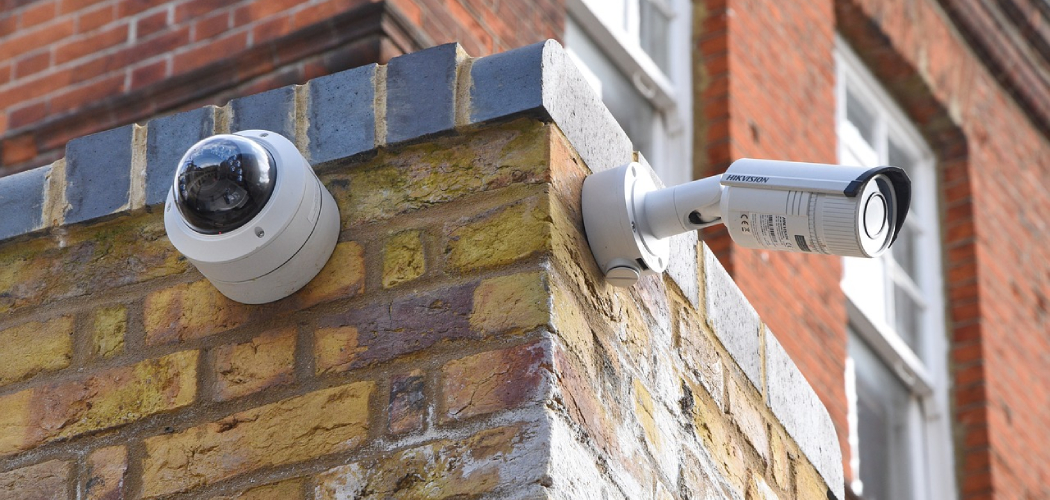How to lock outside storage unit of CCTV footage essential, especially when storing it in outside storage units. With surveillance playing a critical role in safeguarding homes and businesses, ensuring that your footage is protected from theft or tampering should be a top priority. Many people rely on external storage units for this purpose, but without proper locking techniques, even the most advanced systems can be vulnerable.
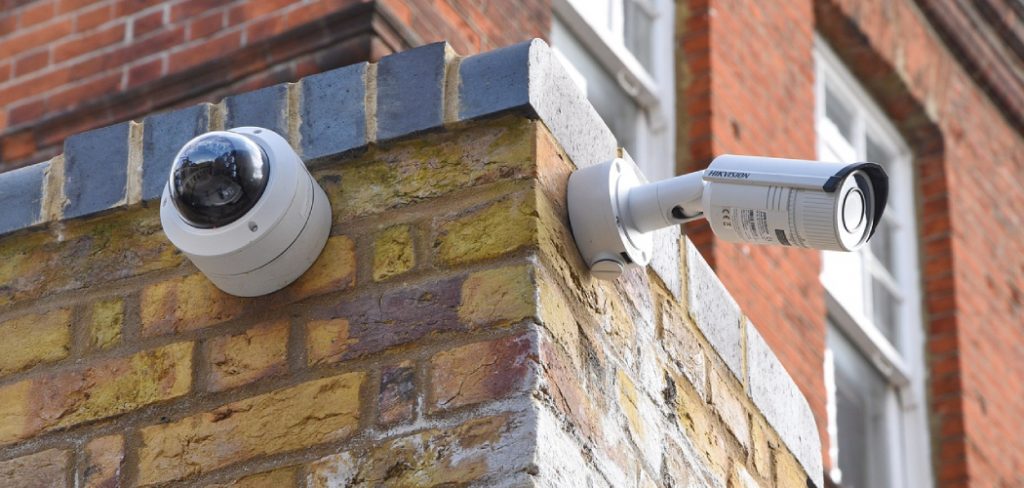
When selecting a lock for your outside storage unit, it’s important to choose a high-quality, weather-resistant lock designed to withstand tampering. Opt for a heavy-duty padlock or disc lock with reinforced steel and a shrouded shackle to make it more resistant to bolt cutters. Additionally, regularly inspect the lock for signs of wear or damage, and replace it immediately if compromised. Beyond the lock itself, consider adding an extra layer of security by installing motion-sensor lights or cameras around the storage area to deter potential intruders. Taking these steps can greatly enhance the protection of your CCTV footage.
This guide will walk you through how to lock outside storage unit of CCTV footage effectively. Whether you’re new to using CCTV systems or want to improve your current security setup, this resource is for you. Keep reading to discover simple, beginner-friendly methods to maximize the safety of your vital surveillance data.
Why Securing Outside Storage Units is Essential
When it comes to CCTV footage, the storage unit holding your video data is just as important as the cameras themselves. Remote storage solutions are increasingly popular because they offer more capacity and flexibility compared to standard DVR or NVR systems. However, outside storage units are particularly susceptible to breaches if not secured properly.
Failing to lock an outside storage unit leaves your surveillance data at risk of theft, vandalism, or tampering. Criminals often target storage areas containing sensitive data because gaining access could allow them to destroy critical evidence or compromise your privacy. A secure lock setup ensures that only authorized individuals can access the stored footage.
Additionally, locking your storage unit safeguards long-term investments. Professional security equipment, including servers and drives, represents a significant expense. By protecting these assets, you ensure uninterrupted monitoring and avoid the financial repercussions of replacing damaged or stolen equipment.
As the need for remote storage units grows, understanding effective security measures not only safeguards video data but also builds confidence in your overall surveillance setup.
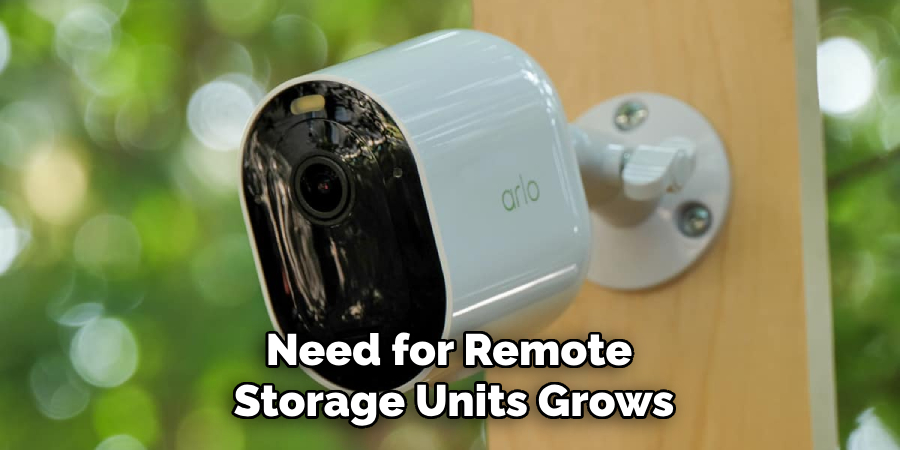
Step-by-Step Guide on How to Lock Outside Storage Unit of CCTV Footage
Step 1: Choose the Right Storage Unit
The first step is selecting a storage unit that’s designed to protect your equipment and footage. Opt for high-quality materials such as steel or aluminum, which offer superior resistance to tampering or break-ins. Additionally, pick a unit with proper ventilation to prevent overheating of your CCTV equipment.
If possible, install the storage unit in a secure, well-lit area with limited access points. While the physical location may not be the “lock” itself, choosing a safe environment provides the foundation for improved security.
Step 2: Select a High-Security Padlock
Invest in a padlock specifically designed for maximum security. Look for options with hardened steel shanks, which are resistant to cutting tools. A high-security padlock should also have an anti-drill plate and anti-pick features for added safety.
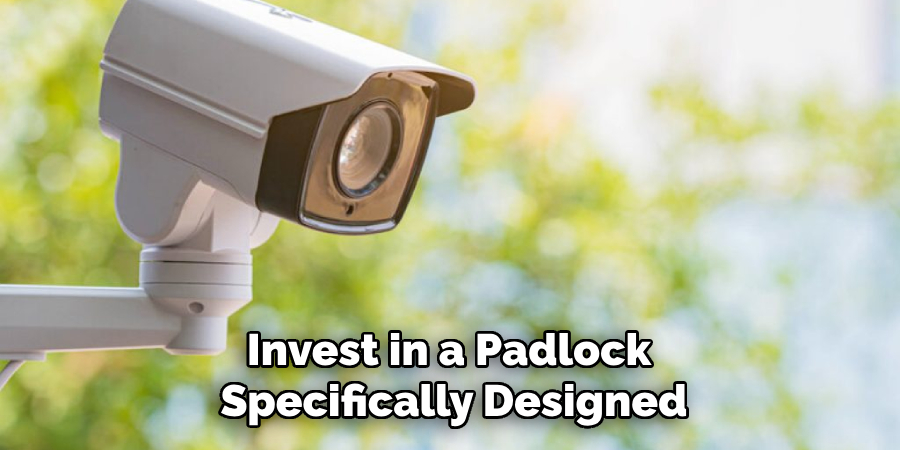
When selecting the padlock, ensure that it fits tightly on your storage unit’s latch. A loose fit could create vulnerabilities, even if the lock itself is strong.
Step 3: Install a Multi-Point Locking System
A single lock on the outside of your unit might be insufficient. Multi-point locking systems offer more comprehensive coverage by securing the door at multiple locations. Install locks at the top, bottom, and middle of the storage unit door to distribute security equally.
This method makes it significantly harder for intruders to force entry, as they would need to overcome several reinforced locking mechanisms simultaneously.
Step 4: Utilize Digital Access Control
For modern storage units, incorporating a digital access control system can enhance security even further. Replace traditional keys with access codes or keycards. Digital systems allow you to personalize who gains access and monitor entry logs for suspicious activity.
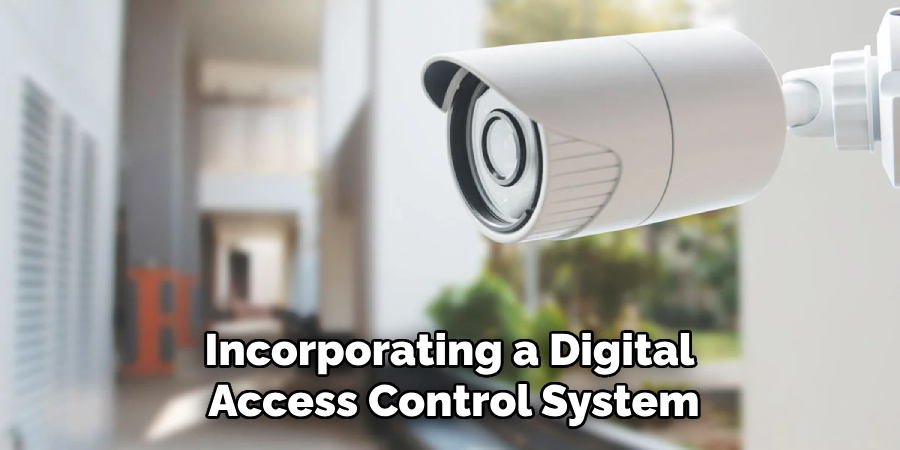
Additionally, many digital systems come equipped with alerts, notifying you immediately via your smartphone if there’s an unauthorized attempt to enter.
Step 5: Reinforce Hinges and Frame
Even with high-quality locks, weak hinges or frames can still make storage units vulnerable. Inspect these areas and upgrade to heavy-duty hinges that are non-removable. Use hinge bolts to strengthen the attachment and prevent forced entry.
For the frame, consider reinforcing it with additional steel layers or materials that resist cutting and bending. These updates deter tools commonly used in break-ins.
Step 6: Encrypt the Stored CCTV Data
Locking the physical storage unit is only one part of the equation. Protecting the actual data stored within ensures complete security. Use encryption software to encode your surveillance files, making them unreadable to unauthorized users. Even if someone gains physical access to the unit, they won’t be able to retrieve or tamper with the files.
Choose solutions with 256-bit encryption or higher, as these offer the most robust data protection against hacking or unauthorized access.
Step 7: Install CCTV Cameras Around the Storage Unit
One of the most effective ways to deter intruders is by monitoring the storage unit itself with additional CCTV cameras. Position cameras to capture every angle of the unit’s exterior, including the entrance and surrounding perimeter.
Ensure these cameras transmit live feeds to a secure monitor so you can immediately respond to threats. The presence of surveillance equipment alone often discourages criminals from attempting unauthorized access.
Step 8: Use Tamper-Proof Screws and Anchors
When attaching the storage unit to its location, use tamper-proof screws and anchors. Standard screws are relatively easy to remove, but tamper-proof options require specialized tools, making them more secure.
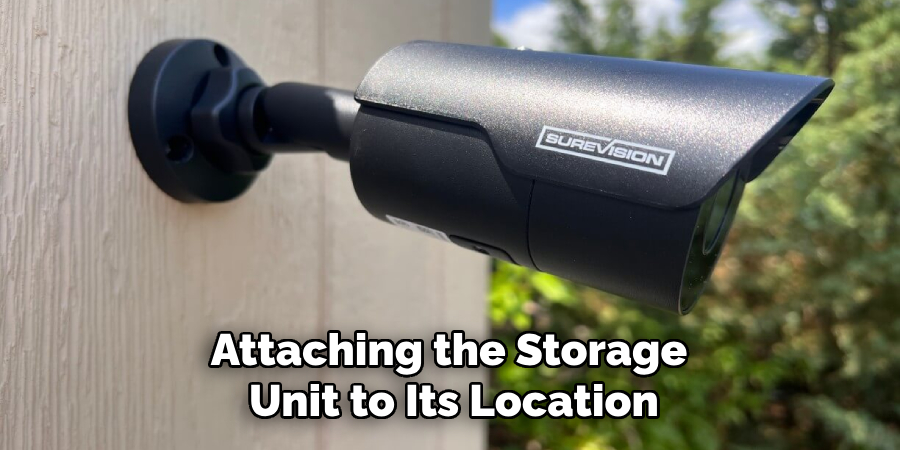
Anchoring the unit also ensures that it cannot be moved or stolen in its entirety. For units placed on concrete or masonry, use heavy-duty expansion bolts for a firm hold.
Step 9: Add Motion-Sensor Lighting
Enhance the security of your storage unit’s surroundings by installing motion-sensor lighting. These lights activate when movement is detected, effectively spotlighting any unauthorized activity.
By eliminating dark corners and shadows, you reduce the likelihood of break-ins and make it easier for nearby cameras to capture clear footage of potential intruders.
Step 10: Regularly Inspect and Maintain Security Measures
Security isn’t a one-time effort. Make it a habit to inspect your locks, hinges, and digital systems regularly. Look for signs of wear, loosened screws, or any other issues indicating potential vulnerabilities. Repair or replace compromised components immediately to maintain the overall protection of your storage unit.
By staying proactive, you can ensure that your outside storage unit remains impervious to attempts at unauthorized access.
Future Security Innovations
The future of security is evolving rapidly, with cutting-edge technologies aimed at enhancing protection for storage units. Smart locks equipped with biometric authentication, such as fingerprint or facial recognition, are becoming increasingly accessible, offering a higher level of access control. Additionally, advancements in AI-powered surveillance systems will enable real-time monitoring and instant threat detection, alerting you to potential breaches before they escalate.
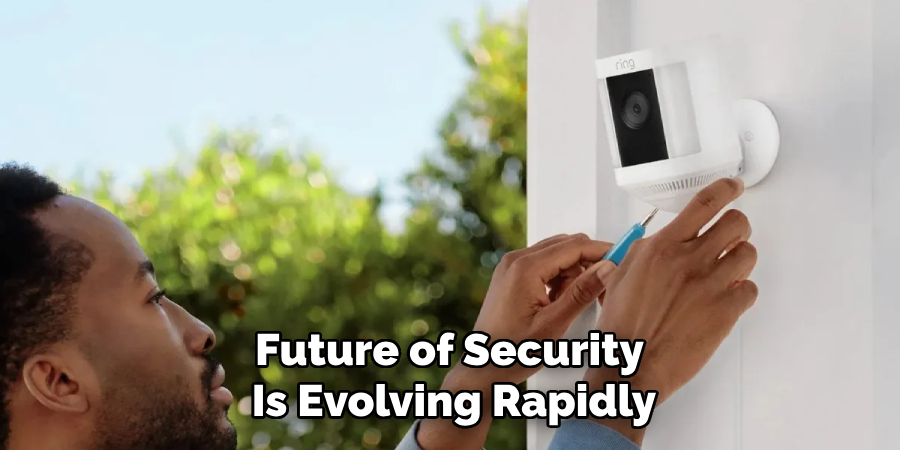
IoT (Internet of Things) integration is another key innovation, allowing all security components—cameras, sensors, and alarms—to communicate seamlessly for a unified defense system. As these technologies continue to develop, they will provide more robust and efficient solutions to address emerging security challenges.
Key Security Tips
- Stay Updated on Technology: Regularly update your security systems to incorporate the latest technologies, such as AI-powered tools and IoT integration, for enhanced efficiency and protection.
- Implement Layered Security: Use a combination of cameras, sensors, and alarms that work together for comprehensive coverage.
- Monitor Proactively: Incorporate real-time monitoring systems to detect and address threats before they escalate.
- Secure IoT Devices: Ensure all interconnected devices have strong passwords and use encrypted communication to prevent unauthorized access.
- Regular Maintenance: Perform routine checks and testing of your security systems to identify and resolve any vulnerabilities.
By following these tips, you can create a resilient defense strategy to address evolving security challenges effectively.
FAQ Section
How often should I inspect the locks on my outside storage unit?
It’s ideal to inspect the locks every month. Routine inspections help you identify wear and tear or tampering attempts early. If your surveillance setup is critical, consider weekly checks to ensure maximum reliability and security.
What type of padlock is best suited for storage units?
A high-security padlock made from hardened steel is the best choice. Consider models with anti-picking, anti-drilling, and weather-resistant features. These locks offer stronger resistance to common burglary tools and environmental factors like rain or humidity.
Can I use digital locks instead of traditional padlocks for my unit?
Yes, digital locks are an excellent alternative. They provide keyless entry, which eliminates the risk of losing keys. Additionally, they often include tracking features so you can monitor who accesses the unit and when, improving overall accountability and security.
Is it necessary to encrypt CCTV footage stored in an outside unit?
Absolutely. Encryption ensures that even if someone gains physical access to the storage unit, they cannot decipher or tamper with the footage. Use advanced encryption algorithms like AES-256 for optimal data security.
Are there ways to deter break-ins besides locking the unit?
Yes, enhancing the surrounding area’s security is crucial. Install motion-sensor lights, CCTV cameras, and alarms around the storage unit. Removing nearby obstacles like tall shrubs or fences also improves visibility around the storage area, reducing potential blind spots.
Conclusion
Securing your CCTV footage requires both physical and digital measures. By following this guide, you’ll understand precisely how to lock outside storage unit of CCTV footage effectively. From choosing high-security locks and reinforcing hinges to installing motion-sensor lighting, these steps build a comprehensive security system for your storage unit.
Additionally, regularly inspecting your storage unit and security measures ensures they remain effective over time. Check for signs of wear or tampering on locks, hinges, and lighting systems. Updating digital security protocols, such as passwords and firmware for connected devices, also plays a crucial role in maintaining a robust defense against unauthorized access. Consistent upkeep demonstrates a proactive approach to safeguarding your valuable assets.
Start implementing these strategies today to safeguard your surveillance data, boost peace of mind, and deter intruders. A secure storage unit is a foundational step in protecting your property and loved ones.

